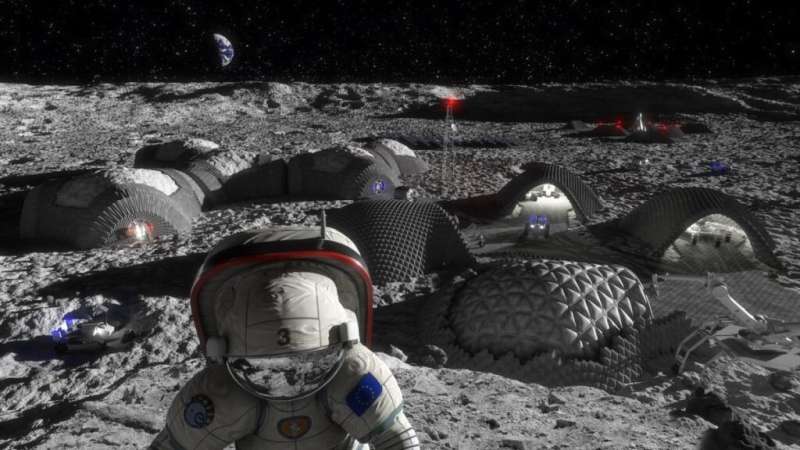This article has been reviewed according to Science X's editorial process and policies. Editors have highlighted the following attributes while ensuring the content's credibility:
fact-checked
trusted source
proofread
Airbus develops a system to extract oxygen and metal from lunar regolith

New technologies using material found in space are constantly popping up, sometimes from smaller companies and sometimes from larger ones. Back in 2020, one of the largest companies of them all announced a technology that could have significant implications for the future lunar exploration missions planned over the next ten years. The European aerospace giant Airbus developed the Regolith to OXYgen and Metals Conversion (ROXY) system.
ROXY creates not only oxygen, a resource vital for humans to breathe and also for rocket fuel, but also makes metals that can be used to manufacture tools, equipment, and even structures on the Moon. And it does it simply from the regolith that is present everywhere on the lunar surface.
This process is similar to MOXIE, the experiment that the rover Perseverance took with it when it landed on the red planet in 2021. However, when Airbus announced a successful test of ROXY in October 2020, MOXIE was not yet proven and was barely even on its way to Mars.
MOXIE also wasn't designed to create metals, which is one of the benefits of ROXY. Those metals can be used in processes like making tools, containers, and other useful objects on the Moon itself rather than bringing them up from Earth. It dovetails nicely with efforts to bring 3D printing technologies to the Moon, and several other companies are rushing to carry out those efforts.
Moreover, ROXY's process is relatively environmentally friendly compared to existing metal-making methods currently used on Earth. A press release from the company mentioned that ROXY could be used as an emission-free process to obtain metals that are otherwise collected using perfluorocarbons, a potent greenhouse gas.
Developing this system took more than just the expertise of one company, though. Airbus collaborated with various universities and other companies on the project, including Fraunhofer, the German research institute, and a team at Boston University.
More recently, in September 2021, Airbus partnered with the Mexican Space Agency to utilize ROXY as part of an in-country Mexican In-situ Resources Utilization program. The project also integrates other technologies from Dereum Labs, a Mexican start-up focused on ISRU. Unfortunately, there hasn't been much news about that collaboration or much information about ROXY's further development in the past three years more generally. There also wasn't much uptake of the story, even back when a successful test was announced in 2021.
Hopefully, the lack of media attention doesn't mean this potentially ground-breaking technology gets lost in the shuffle of technologies intended to help catalyze the new space economy. But if it does, it might be because there are so many other potential options for turning lunar dust into something useful.
Provided by Universe Today



















